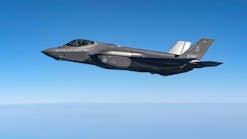Officials at Raleigh-Durham International Airport made up their minds in 2003 to build a sweeping, spacious passenger terminal that would be an architectural icon and regional gateway for the Triangle.
It was a grand ambition, but they weren't sure they could pay for it.
Now they're sure. The airport authority this week began increasing its budget for the building that will replace RDU's cramped Terminal C. The new price is $555 million.
Three years ago, with air travel down and the nation's economy in a slump, RDU put a $350 million cap on the project. Inflation and rising building costs have increased that price to about $430 million.
That plan called for replacing most of the original terminal -- including the north half of the passenger concourse, which was demolished last year. To save money, the south concourse -- now in use -- would be renovated, not rebuilt.
Air travel has rebounded since 2003, and RDU's financial picture has brightened. The airport authority voted Thursday to spend an extra $125 million so the south concourse can be razed and rebuilt, too.
Also Thursday, the airport authority agreed to hire Archer Western Contractors of Atlanta as general contractor. Archer Western was low bidder for the original job with a proposal of $270 million -- which included renovating the southern concourse, rather than replacing it.
The RDU board authorized a contract of up to $258 million, but the actual sum might be lower. John B. Brantley, RDU director, said several cost items are still being negotiated.
Plans have not yet been drawn for the replacement of the south concourse. RDU expects to invite Archer Western to bid for that job next year.
Construction will start this spring on the new north concourse and a greatly expanded entry hall with ticketing, bag claim and security areas. The first phase is scheduled to open in 2008. The remaining work, including the south concourse, is to be finished in 2010.
Why it makes sense
Replacing the south concourse is a good idea for several reasons, Brantley said.
The new terminal concourse will be 20 feet wider, constructed according to building codes that have changed greatly since the south concourse was built nearly 20 years ago. The new north and old south concourses would be separate buildings with different heating and utility systems.
"You would have a brand-new building with a 20-year-old component," Brantley said, and the south concourse eventually would have to be replaced as well.
RDU can afford the extra cost now, Brantley said.
Airport officials last year were able to secure lower interest rates than they had expected for the revenue bonds that will finance the project, reducing interest costs.
"So we find ourselves today in a better position than we were in three years ago," Brantley said.
RDU will repay the bonds with money from parking and other operating income and a $4.50 passenger facility charge added to every traveler's ticket. A record 9.3 million air travelers began or ended their trips at RDU last year.
Welcome asset
W. Stephens Toler of Durham, chairman of the airport authority, said Friday that the new terminal will be a welcome asset for the Triangle.
"RDU International is certainly one of the premier economic engines of our region, and for us to be able to enhance that is good news," Toler said. "People are going to see something that's going to make them proud for their region."
###
###
Features of the new terminal
Architect: Curtis W. Fentress of Denver
Size: About 890,000 square feet, nearly triple the size of Terminal C
Design: Undulating roofline inspired by hilly Piedmont landscape. Wooden roof trusses, with ceilings up to 60 feet high.
Entry: Three ticketing islands, each with 20 check-in positions. Expanded security checkpoints. Baggage screening moved away from public view.
Concourse: 110 feet wide -- 20 feet wider than present concourse -- and longer, with 32 to 35 gates.
Airlines scheduled to use the new terminal: Air Canada, American, American Eagle, United (now in Terminal C). Delta, Continental, Northwest, US Airways, America West (moving from Terminal A).
###
###
TIMELINEWhy scrap a terminal open only since 1987?
1987: The red-roofed Terminal C opens as a hub for American Airlines. Most passengers arrive on one jet and depart on another.
2002: RDU acquires Terminal C from American Airlines and shelves a major overhaul of Terminal A.
2003: RDU settles on a plan to replace Terminal C.
2005: Demolition of the north concourse and 13 of Terminal C's 26 gates.
2006-08: Construction of new north concourse and most of the expanded front hall with ticketing, bag claim and security checkpoint areas.
Summer 2008: Most of new front hall opens, along with north concourse with 17 gates.
2008-2010: Construction of the remaining portion of the front hall and reconstruction of the central concourse. South concourse, previously scheduled for renovation, expected to be rebuilt instead.
2010: New terminal opens with 32 to 35 gates.
Terminal C was designed for use as an American Airlines "hub" terminal. Most passengers arrived on one plane, walked across the concourse and flew out on another plane.
It was built with a small lobby, ticketing and bag claim areas because only 20 percent of its passengers used the front door -- starting or ending their flights at RDU.
RDU no longer serves as a hub for thousands of travelers making connecting flights every day. More than 95 percent of its passengers arrive or leave on the ground.
The front half of Terminal C is too small to meet their needs, airport officials say, and Terminal A also is filled to capacity. The new terminal will give the airport room to grow.
Copyright 2005 LexisNexis, a division of Reed Elsevier Inc. All rights reserved.
Terms and Conditions | Privacy Policy
News stories provided by third parties are not edited by "Site Publication" staff. For suggestions and comments, please click the Contact link at the bottom of this page.





